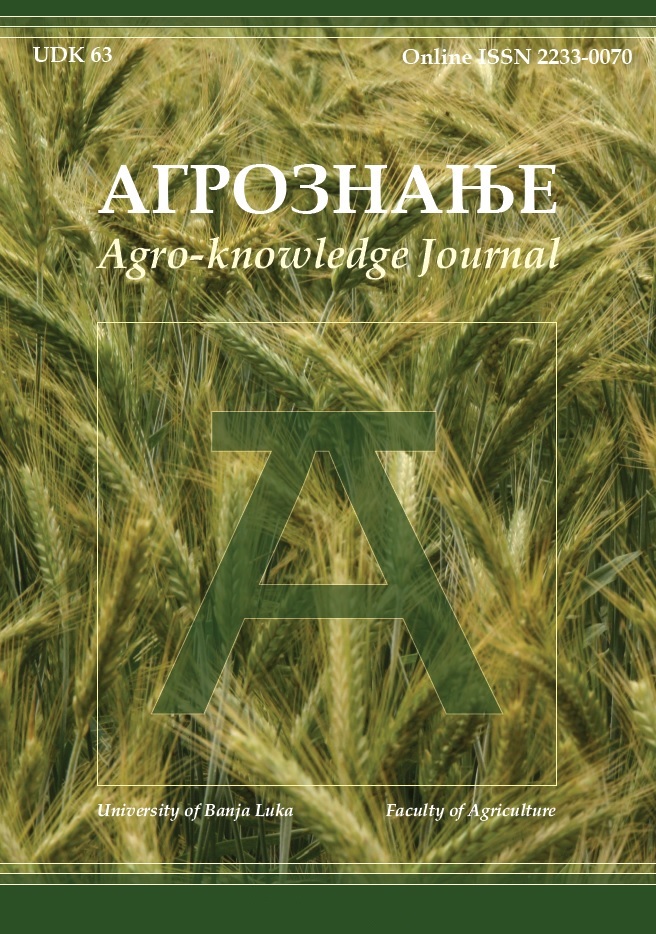Websites as determinants of adolescents’ attitudes towards organic food
DOI:
https://doi.org/10.7251/AGREN2403235CAbstract
The aim of this research is to identify the latent structure of the website quality construct in adolescents and its statistically significant predictive contribution to the variance in adolescent attitudes towards organic food. The research included a pertinent sample of high school students of both genders (N = 178). The average age of high school seniors was 18.04 ± 1.08 years. The Quality of Website and Attitudes towards Organic Food Scale (Kocić et al., 2022) was used in this research. Exploratory factor analysis – Principal Component Analysis (PCA), applied on the 12 manifest variables, was used to extract four hypothetical basic factors interpreted as: General external contributions (F1), Irrigation (F2), Finance (F3), and Material and human resources (F4). The research also discusses theoretical and practical implications of the empirical findings obtained for the operationalization of the isolated three-component model in the adolescent population. The results of the multiple regression analysis showed that attitudes towards organic food were explained by the selected predictors with statistical significance (p ≤ 0.05) and more than half of the variance. It has also been determined that high school graduates who use the construct of a better designed, higher quality, and more informative website manifest more pronounced cognitive and affective attitudes towards organic food. This study provides more detailed explanations of these findings and implications for future research.

